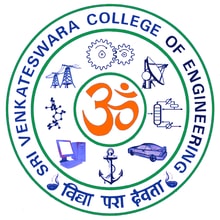PROSPECT OF MARITIME IN SHIPMENT AND LOGISTICS SECTOR / SCOPE OF MARITIME IN SHIPMENT AND LOGISTICS SECTOR
On 20/04/20, by admin, under PROSPECT OF MARITIME IN SHIPMENT AND LOGISTICS SECTOR / SCOPE OF MARITIME IN SHIPMENT AND LOGISTICS SECTOR
How many of us know that the prospect of marine engineers greatly depends on the Shipping and Logistics sector?
In order to understand this, one needs to know the logistics market better.
SHIPPING AND LOGISTICS SECTOR
Shipping Industry is very crucial and extensive for the development of any country.
The economy based on sea trade is aptly termed as “Blue Economy.”
According to the Ministry of Shipping, around 95 percent of India’s trading by volume and 70 percent by value is done through the transport services for the maritime industry. India has 12 major, and 205 notified minor and intermediate ports. Under the National Perspective Plan for Sagarmala, six new mega ports will be developed in the country.
The Indian ports and shipping industry plays a vital role in sustaining growth in the country’s trade and commerce. India is the sixteenth largest maritime country in the world, with a coastline of about 7,517 km. The Indian Government plays a vital role in supporting the ports sector. It has allowed Foreign Direct Investment (FDI) of up to 100 percent under the automatic route for port and harbor construction and maintenance projects. It has also facilitated a 10-year tax holiday to enterprises that develop, maintain, and operate ports, inland waterways, and inland ports.
SHIPPING LOGISTICS MARKET SIZE
During the Financial Year (FY) 2019-20, cargo traffic at major ports in the country was reported at 699.05 million tonnes (MT). Cargo traffic handled stood at 463.07 MT in 2019 (till November 2019). Cargo traffic at non-major ports was estimated at 529.6 MT during FY 2018-19 and grew at 10 percent CAGR between FY 2017-18 and reached 281.0 million tonnes in FY 2018-19 (up to Sep 18). The major ports had a capacity of 1,514.09. MT per annum by FY 2019-20 (partial). The Maritime Agenda 2010-20 has a 2020 target of 3,130 MT of port capacity. The government has taken several measures to improve operational efficiency through mechanization, deepening the draft, and speedy evacuations.
INVESTMENTS/ DEVELOPMENTS
GOVERNMENT INITIATIVES
Some major initiatives taken by the government to promote the ports sector in India are as follows:
ROAD AHEAD
In order to understand this, one needs to know the logistics market better.
SHIPPING AND LOGISTICS SECTOR
Shipping Industry is very crucial and extensive for the development of any country.
The economy based on sea trade is aptly termed as “Blue Economy.”
According to the Ministry of Shipping, around 95 percent of India’s trading by volume and 70 percent by value is done through the transport services for the maritime industry. India has 12 major, and 205 notified minor and intermediate ports. Under the National Perspective Plan for Sagarmala, six new mega ports will be developed in the country.
The Indian ports and shipping industry plays a vital role in sustaining growth in the country’s trade and commerce. India is the sixteenth largest maritime country in the world, with a coastline of about 7,517 km. The Indian Government plays a vital role in supporting the ports sector. It has allowed Foreign Direct Investment (FDI) of up to 100 percent under the automatic route for port and harbor construction and maintenance projects. It has also facilitated a 10-year tax holiday to enterprises that develop, maintain, and operate ports, inland waterways, and inland ports.
SHIPPING LOGISTICS MARKET SIZE
During the Financial Year (FY) 2019-20, cargo traffic at major ports in the country was reported at 699.05 million tonnes (MT). Cargo traffic handled stood at 463.07 MT in 2019 (till November 2019). Cargo traffic at non-major ports was estimated at 529.6 MT during FY 2018-19 and grew at 10 percent CAGR between FY 2017-18 and reached 281.0 million tonnes in FY 2018-19 (up to Sep 18). The major ports had a capacity of 1,514.09. MT per annum by FY 2019-20 (partial). The Maritime Agenda 2010-20 has a 2020 target of 3,130 MT of port capacity. The government has taken several measures to improve operational efficiency through mechanization, deepening the draft, and speedy evacuations.
INVESTMENTS/ DEVELOPMENTS
- In November 2019, JSW Infrastructure commissioned a new iron ore terminal at the Paradip port in Odisha with a capacity to handle up to 18 million tonnes of cargo per annum.
- In November 2019, the first-ever movement of container cargo on Brahmaputra (National Waterway -2), focused on improving the connectivity to the North-Eastern Region (NER).
- In October 2019, Ease of Doing Business-Implementation of Radio Frequency Identification (RFID) based Port Access Control System (PACS) at Kolkata Dock System (KDS) was introduced.
- JSW Infrastructure entered into a built, operate and transfer agreement with Paradip Port Trust at an investment of Rs 750 crore (US$107.31 million) to operate Paradip port.
- In August 2019, India became the first country in the world to issue Biometric Seafarer Identity Document (BSID), capturing the facial biometric data of seafarers.
- Adani Ports and Special Economic Zone (APSEZ) became the first Indian port operator to handle cargo movement of 200 million tonnes (MT) in 2018-19.
- Essar Ports will invest US$70 million in Hazira port by 2020.
- The current Honourable Minister for Shipping, Road Transport and Highways, Government of India, has announced a massive investment in India’s ports and roads sector, which is likely to help boost the country’s economy. The Indian government plans to develop 10 coastal economic regions as part of plans to revive the country’s Sagarmala (string of ports) project.
- The zones would be converted into manufacturing hubs, supported by port modernization projects, and could span 300–500 km of the coastline. The government is also looking to develop the inland waterway sector as an alternative to road and rail routes to transport goods to the nation’s ports and hopes to attract private investment within the sector.
- The Ports sector in India has received a cumulative FDI of US$1.64 billion between April 2000 and March 2019.
- Indian ports and shipping sector witnessed three M&A deals worth US$29 million in 2017.
GOVERNMENT INITIATIVES
Some major initiatives taken by the government to promote the ports sector in India are as follows:
- As of November 2019, several projects with a total project cost of Rs 13,308.41 crore (US$1.90 billion) have been awarded in the last three years on up-gradation of the major ports.
- As of Union Budget 2019-20, the total allocation for the Ministry of Shipping is Rs 1,902.56 crore (US$272.22 million).
- Net profit at major ports has increased from Rs 1,150 crore (US$178.4 million) in FY13 to Rs 3,413 crore (US$529.6 million) in FY18 while operating margin increased from 23 percent to 44 percent.
- In May 2018, the Ministry of Shipping allowed foreign-flagged ships to carry containers for transshipment.
- In March 2018, a revised Model Concession Agreement (MCA) was approved to make port projects more investor-friendly and make the investment climate in the sector more attractive.
ROAD AHEAD
- Increasing investments and cargo traffic points towards a healthy outlook for the Indian ports sector. Providers of services such as operation and maintenance (O&M), pilotage and harbouring, and marine assets such as barges and dredges are benefiting from these investments.
- The capacity addition at ports is expected to grow at a CAGR of 5-6 percent till 2022, thereby adding 275-325 MT of capacity.
- Under the Sagarmala Programme, the government has envisioned a total of 189 projects for the modernization of ports involving an investment of Rs 1.42 trillion (US$22 billion) by the year 2035.
- The Ministry of Shipping has set a target capacity of over 3,130 MMT by 2020, which would be driven by participation from the private sector. Non-major ports are expected to generate over 50 percent of this capacity.
- India’s cargo traffic handled by ports is expected to reach 1,695 million metric tonnes by 2021-22, according to a report of the National Transport Development Policy Committee.
- Within the ports sector, projects worth an investment of US$10 billion have been identified and will be awarded over the coming five years.




